Meet the Wetherby jeweller who takes couples gold panning for their wedding rings
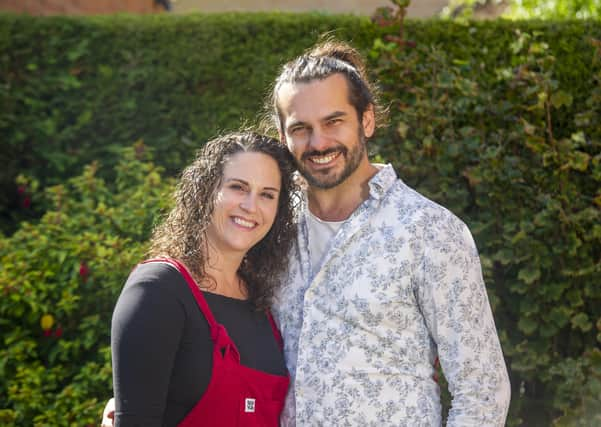

Mark Bell has been gold panning for most of his life. “I’ve always looked for gold,” he says. As a seven-year-old boy, he and his father, Edward, a steel forger and retired Parachute Regiment officer, caught gold fever on a camper van holiday in Scotland.
“On one of those trips we crossed over the Baile An Or Bridge which the Kildonan Burn runs past, up near Helmsdale. There was a man hunched by the river with a stetson and a beard, and my dad asked me to jump out and see what he was doing,” he says. “He turned out to be a gold-panner and he showed me how to look for gold. He took seven specks of gold, dropped them into the top of his pan, panned his pan out and found seven specks of gold at the bottom. I was amazed. So my dad hoiked the handbrake on and we stayed there for two weeks and learned how to look for gold on that river with an old timer.”
Advertisement
Hide AdAdvertisement
Hide AdFrom then on, father and son went gold panning as often as they could. Mark likes stories about gold. As a jewellery maker - his Wetherby-based company, Jacqueline & Edward, is named after his wife and his father, who died when Mark was 18. He believes that a ring is made even more special when it becomes a story on the wearer’s finger, so he helps to create those stories for couples planning to marry by taking them on gold-panning adventures in the wilds of Scotland to find their own gold to use in the making of their rings.
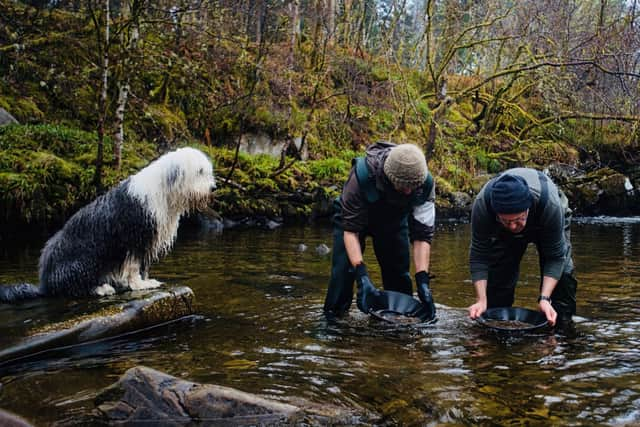

There is gold in many rivers in Scotland because of a geological event that happened 420 million years ago, when England and Scotland were two continents separated by the Iapetus Ocean. When it closed, the massive mountain- building event that thickened the earth’s crust provided the geological conditions for gold to concentrate from the rocks into hydrothermal systems. Some gold still resides in veins in the rock and some sits in deposits in stream and riverbeds. One of the most rare types of gold Mark uses is natural river gold found in Yorkshire. “Most people don’t even know it exists” he says.
The gold pans are round shallow plastic bowls, wide at the top and narrower at the bottom, with a series of ridges on the inside. You can pan on the riverbeds using a pump to suck out the gravel or you can snorkel and float down the river with a screwdriver and tweezers looking for tiny cracks in the bedrock. Licences are usually needed to pan and Mark advises beginners to buy one for the area around Leadhills and Wanlockhead (available from the Museum of Lead Mining in Wanlockhead).
Originally from Blackburn, Mark, 41, is also a competitive gold panner and has taken part in world gold-panning championships at Moffat, Scotland, been part of the British team, and won both the British and Scottish gold-panning titles. He believes in the sustainable acquisition of precious metals and is a trained geologist and goldsmith, chartered environmentalist, chartered scientist and is also chartered with the Institute of Water and Environmental Management.
Advertisement
Hide AdAdvertisement
Hide AdHe started Jacqueline & Edward five years ago. A degree in geology from the University of Leeds and a Masters in geochemistry was followed by a 15-year career in contaminated land consulting, as what he describes as a “ground doctor”, investigating land and water resources for safety, including to restore former mining areas. Environmental and ethical concerns remain important; for every ring bought, trees are planted in the Caledonian Forest.
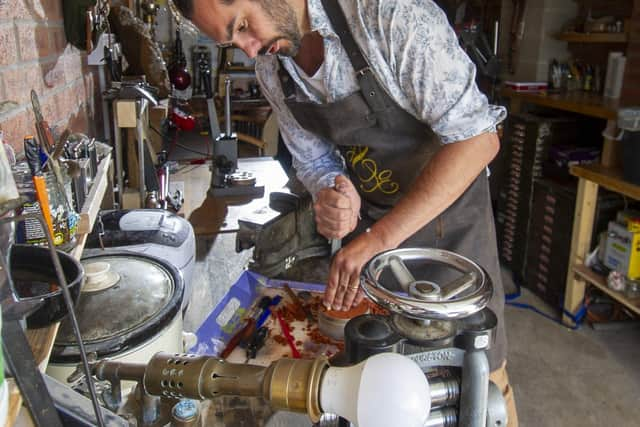

Last October, Mark and Jacqueline, a former West End musical theatre performer, accountant and singing teacher, both left their jobs to work full-time on the business, with Jacqueline taking care of finance and social media. They have been married for 10 years and have two young daughters. Mark went up to Scotland every weekend for 14 months to find enough gold to make their own wedding rings, and Jacqueline joined him to help find a final piece. Now Mark extends the experience to customers through his guided gold-panning trips, usually meeting the couple (sometimes it’s just the groom-to-be or it can be up to four people) at a rendezvous in Scotland before they head out to the glens to pan. It costs £500.
Typically, a pair of wedding rings costs around £1,200. Unless working on a pure river gold commission, gold found by panning accounts for only a small part of the rings’ content. At his workshop, Mark makes gold alloys from scratch using recycled pure gold grain, adding copper from recycled electrical wire and also silver grain and palladium, mixed in varying percentages depending on whether white, yellow, rose or red gold, for example, are wanted. The ingredients are melted in a crucible heated by a blowtorch and then poured into a channel of clay to create the first form of the ring before it is worked into its final circular shape using hammering and soldering before being finished under a microscope, adding any engraving needed or desired.
By law, gold that is sold and weighs more than 1g has to be sent off to be independently assayed and hallmarked and so Mark is registered at the Assay Offices in Sheffield and Edinburgh. He likes to use recycled gold, too, and encourages customers to bring their own, especially from family jewellery, so it can be melted into the stories of their rings. He makes about 40 wedding rings a month and his customers usually find Jacqueline & Edward via the website and he can also be found through Etsy and Not on the High Street.
Advertisement
Hide AdAdvertisement
Hide AdSizing is an important factor – those treasured rings must not fall off or feel too tight – and Mark has his own special method of sizing fingers, plus a 3D printer ring which he uses to make prototypes that couples can wear for a while before the real ones are completed,.
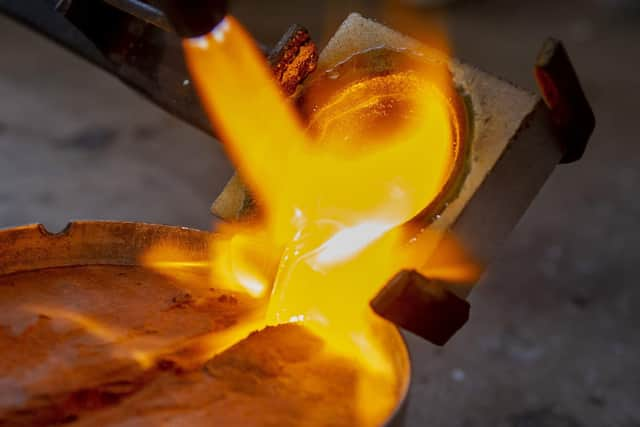

He began learning silversmithing and jewellery- making seven years ago at Jewellery Workshop Leeds and also trained with professional bench jeweller and stone setter Aaron Smith. Diamonds can prove problematic in ethical terms. Mark does not want to work with blood diamonds and many of his customers also have concerns about where their diamonds come from. He steers clear of large diamond mines, instead using recycled diamonds from a trusted dealer and he is currently researching the potential of using diamonds from small artisan mines run by and for local people in Africa.
He also uses laboratory-grown diamonds from Washington DC (he has been out to see the operation). These are grown as a cube over six weeks by cleaving the carbon off methane in a hydrogen atmosphere, then faceted and certified. This is becoming an important new way of producing ethical diamonds.
Mark says Jacqueline & Edward will not always be based at the family home in Wetherby and there are plans for a shop and studio in Wetherby town centre. He intends this to be an experiential retail space with a river running through it to show how gold is deposited, and he hopes to work there alongside other designer-makers, including perhaps a wedding dress designer.
Advertisement
Hide AdAdvertisement
Hide AdFor now, the business is growing, sending rings out across the UK and to Europe, the US and Australia. “The best things in life are the people you love, the places you go and the memories you make,” says Mark on the impressive Jacqueline & Edward website, which has lots of wedding ring design inspiration – as well as personal stories from the people who now wear his rings.
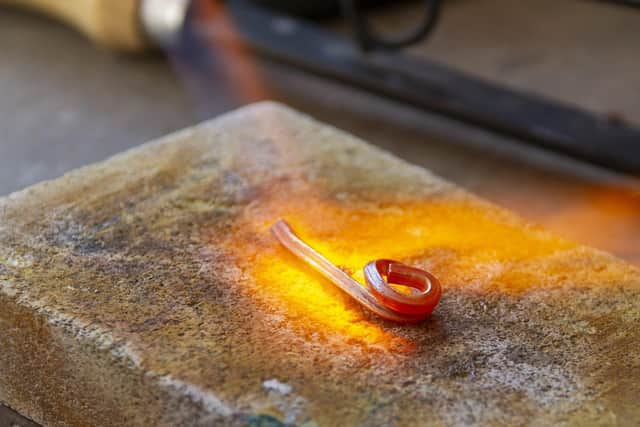

The couples who choose Jacqueline & Edward rings tend to be those who want their precious wedding bands to be bespoke, personalised, handmade and ethical. “There’s a growing movement towards people thinking about where things come from in the world,” Mark says. “It’s not just a ring.”
www.jacquelineandedward.com
Comment Guidelines
National World encourages reader discussion on our stories. User feedback, insights and back-and-forth exchanges add a rich layer of context to reporting. Please review our Community Guidelines before commenting.